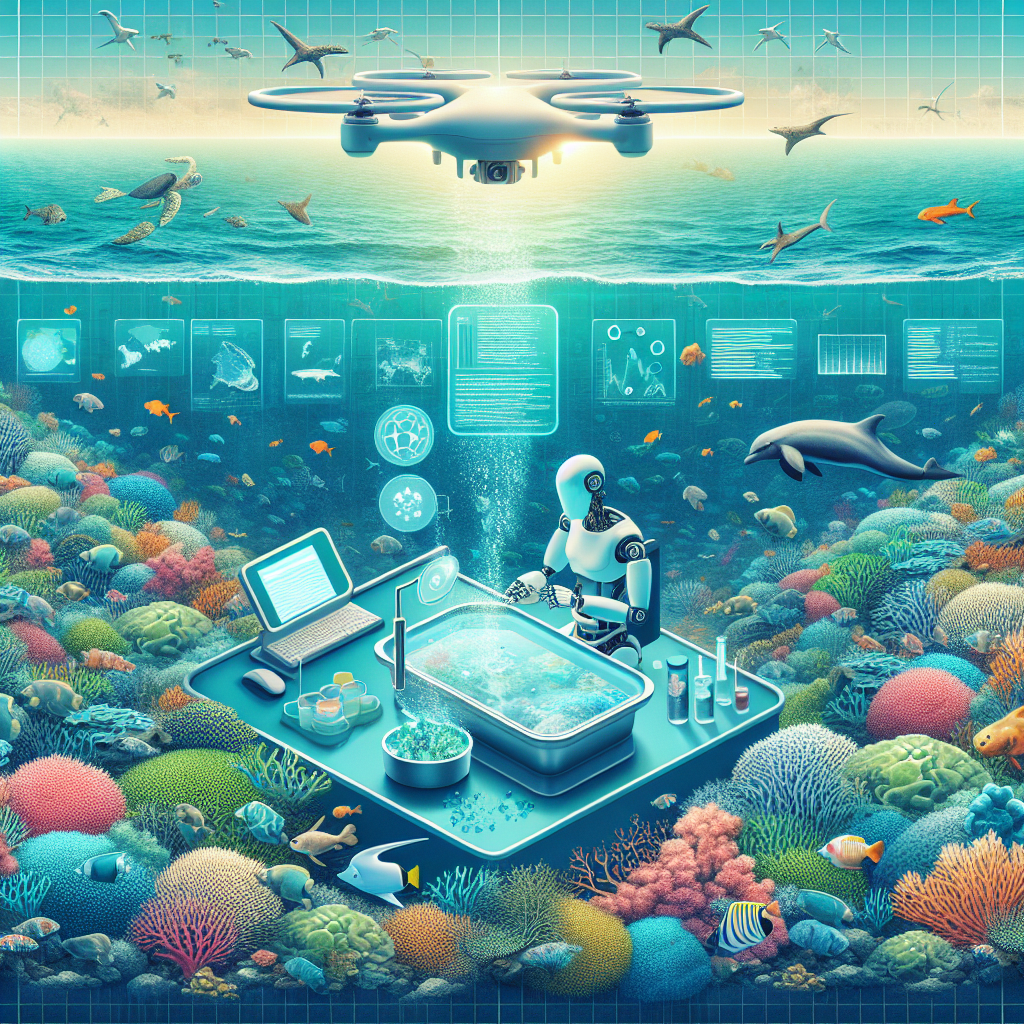AI and Marine Conservation: Innovations for Ocean Protection
The world’s oceans cover more than 70% of the Earth’s surface and play a vital role in regulating the planet’s climate, providing food and livelihoods for millions of people, and supporting a diverse array of marine life. However, human activities such as overfishing, pollution, and climate change are threatening the health of our oceans and putting marine ecosystems at risk.
In recent years, there has been growing recognition of the need to protect and preserve our oceans, and advances in technology, particularly artificial intelligence (AI), are being harnessed to help address the challenges facing marine conservation. AI has the potential to revolutionize the way we monitor and manage marine ecosystems, allowing us to better understand and respond to threats in real-time.
One of the key applications of AI in marine conservation is in the monitoring and management of marine protected areas (MPAs). MPAs are designated areas of the ocean where human activities are restricted to protect marine biodiversity and ecosystem health. AI can help improve the effectiveness of MPAs by providing real-time data on the status of marine ecosystems, enabling better decision-making and enforcement of conservation measures.
For example, AI-powered drones and satellites can be used to monitor illegal fishing activities in MPAs, allowing authorities to respond quickly and effectively to threats. AI algorithms can also analyze data from underwater sensors to track the movement of marine species and assess the health of coral reefs, seagrass beds, and other critical habitats.
AI is also being used to improve the efficiency of fisheries management and combat illegal, unreported, and unregulated (IUU) fishing. By analyzing data on fishing vessel movements, catch sizes, and other relevant factors, AI algorithms can help predict where illegal fishing is likely to occur and enable authorities to target enforcement efforts more effectively.
In addition to monitoring and enforcement, AI is also being used to enhance our understanding of marine ecosystems and the impacts of human activities on marine life. For example, AI algorithms can analyze vast amounts of data on ocean temperatures, currents, and other environmental factors to predict the effects of climate change on marine species and habitats.
Furthermore, AI can help identify and track endangered species, such as whales and sea turtles, by analyzing acoustic data and satellite imagery. By combining AI with other technologies, such as underwater drones and genetic analysis, researchers can gain a more comprehensive understanding of these species’ behaviors and habitats, enabling more effective conservation efforts.
Overall, the potential of AI in marine conservation is vast, and ongoing research and development efforts are continuing to explore new applications and innovations. By harnessing the power of AI, we can better protect our oceans and ensure the long-term health and sustainability of marine ecosystems for future generations.
FAQs
Q: How is AI being used to combat illegal fishing?
A: AI is being used to analyze data on fishing vessel movements, catch sizes, and other factors to predict where illegal fishing is likely to occur and enable authorities to target enforcement efforts more effectively.
Q: Can AI help monitor the health of coral reefs?
A: Yes, AI algorithms can analyze data from underwater sensors to track the health of coral reefs and other critical habitats in real-time.
Q: How can AI be used to track endangered species?
A: AI can analyze acoustic data, satellite imagery, and other sources of information to identify and track endangered species, enabling more effective conservation efforts.
Q: What are some of the challenges facing the use of AI in marine conservation?
A: Some of the challenges include the need for greater collaboration and data sharing among stakeholders, addressing ethical and privacy concerns related to AI technologies, and ensuring that AI is used in a way that is transparent and accountable.
Q: What are some future developments in AI and marine conservation?
A: Future developments in AI and marine conservation may include the use of autonomous underwater vehicles for data collection, the development of AI-powered decision support tools for marine resource management, and the integration of AI with other emerging technologies such as blockchain for enhanced transparency and traceability in seafood supply chains.

